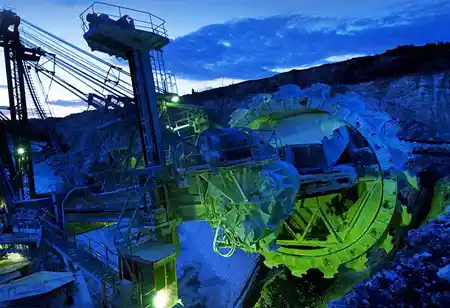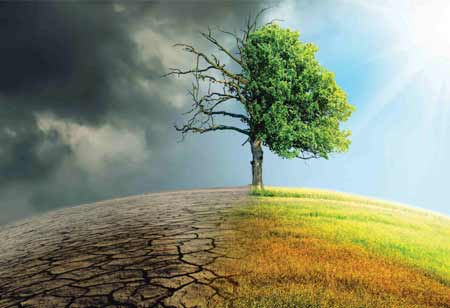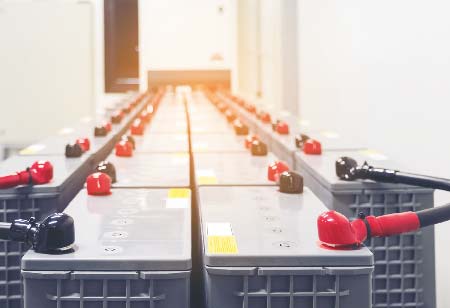THANK YOU FOR SUBSCRIBING

Balancing Sustainability and Organizational Efficiency
Christian Bremer, Site Head and Daniel Staak, Director, Global Manufacturing Process Optimization of Arxada

 Christian Bremer, Site Head and Daniel Staak, Director, Global Manufacturing Process Optimization of Arxada
Christian Bremer, Site Head and Daniel Staak, Director, Global Manufacturing Process Optimization of Arxada In an interview, Christian Bremer, site head and Daniel Staak, director of global manufacturing process optimization at Arxada, discusses their views on adapting green initiatives in business while maintaining organizational efficiency.
“The field of climate change mitigation and sustainability is experiencing a transition as it integrates the latest technological advancements. From carbon capture and storage technologies to green energy initiatives, organizations are vying to address the urgent challenges and expectations of an environmentally conscious global community." Having extensive experience in this domain, how do you see the future of climate change mitigation evolving with even more innovative solutions, tailored approaches, and state-of-the-art technology?
The chemical industry is currently using fossil fuels in two basic ways. This is an evolving area of innovation and will likely look different in the future. The first usage is for energy purposes. We need a lot of heat to run our processes. That part is relatively simple to replace, and we see it already progressing. The transition will go towards electricity as the heat source, which can come from renewable sources. Solar and wind power are making tremendous steps forward in terms of cost and efficiency. The only remaining problem with these energies is the 24/7 availability, thus the well-known storage problem. We are, however, optimistic this can be greatly improved within the next decade, as noted below. For carbon capture and storage (CCS), we do not see this as a prevailing technology where the emission of CO2 is not an essential part of the process. If the incineration is done to produce heat, it will be replaced. CCS will be applied only in applications where carbon emission is an integral part of the process beyond heat generation, like chemical reactions, which set free CO2 or waste incineration.
The second use of fossil fuel, material usage, is much harder to replace. To do this requires green raw materials for our products. These raw materials may also be a limited resource in the future. There are ten thousand chemical products, but you only have a few roots if you go backward on this tree. Our presumption is we will more or less keep this value chain, thus the chemical tree, and only replace a few roots with renewable sources. This approach would have the advantage of keeping most of our processes and plants. This allows the transition to happen much faster. The roots of the chemical tree would be base chemicals like ethanol, acetic acid, naphtha, etc., and come from renewable sources. However, available quantities will be very limited. That is why it is so important they are not being burned for energy purposes. An example of this is the use of combustion engines.
" Sustainability is a business imperative and must be part of a holistic approach to running a business while being environmentally responsible "
The third important aspect is efficient use of resources and energy. As the world continues to demand both, these resources are likely to be limited in the future. Thus, innovative and new intensified technologies are needed. Keywords like heat integration, heat pumps, high yield plasma technology, along with innovations that have yet to be discovered and/or commercialized, will be essential.
"Organizations increasingly aim to merge environmental stewardship with their operations, in a signature approach. To embody the essence of sustainable development, practices are meticulously tailored to meet the planet's needs while also providing value to stakeholders.” How do you balance rigorous climate change mitigation strategies while still creating impactful and effective solutions? How can one blend environmental sustainability and operational efficiency to deliver an approach that addresses global warming and ensures organizational success?
We no longer see this as a contradiction. With the Carbon Trading System (CTS) and rigid environmental legislation, it is more commonplace that environmentally friendly solutions are financially attractive. Efficiency improvements very often address the needs of both environmental and financial targets. Sustainability is a business imperative and must be part of a holistic approach to running a business while being environmentally responsible.
Is there an emerging technology or methodology in the climate change mitigation space that you are optimistic about? How will it enhance sustainable practices and make a difference in our fight against global warming?
Definitely Sodium-Ion batteries. At Arxada, we are contributing to this innovation as a manufacturer of the anode and cathode material needed for the product.
As stated above, the main problem of the sustainability transformation journey is not the generation of renewable electricity (wind and solar power are doing a fantastic job) but the storage. Sodium-ion batteries can be a game changer here. They are inexpensive (1/3 of Li-Ion per kWh), long-lasting (25 years), fast charging, and eliminate all critical raw materials (Li, Cu, graphite, cobalt). All materials in use are essentially nearly limitless. If we can apply this, along with other technologies, we can provide enough storage capacity for the green electricity needed 24/7. This, we believe, can help mitigate energy problems.
What are the best practices and standards for designing, implementing, and evaluating sustainability for climate change mitigation?
It just needs to be done. Through the evaluation of both business needs and opportunities, solutions can be evaluated and built into long-term, resilient business planning.
Can you give us a brief background on your roles in the organizations you’ve worked for? How does the experience augment your role and responsibility at your current organization?
I am a process engineer by training, and my whole professional life has been focused on developing and improving chemical processes to make them more cost-effective. The sustainability aspect fits very well into this. To develop the solution, the same skill set is needed. And as mentioned earlier, very often, the most efficient solution nowadays is the most sustainable one.
What initiatives or programs have you spearheaded at Arxada, and how are these programs making a difference for consumers in the industry?
We had a successful project in Visp (reference the N20 Abatement) and N2O Abatement in Visp (arxada.com). That said, we do not address this as a special program or initiative, but rather it is part of our work routine and how we run our business.
As an ending note, what is your advice for other senior leaders and CXOs working in the space? How can they extract the full potential of emerging technologies?
Think out of the box. What might be impossible today can be tomorrow's reality.
We have seen this now in the automotive industry with the electric vehicles, and we will see it in many industries in the future. We certainly expect to see it here at Arxada, as sustainability in the industry is our founding principle.
Read Also






















ON THE DECK